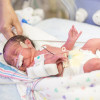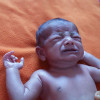
 IJCP Editorial Team
IJCP Editorial Team
Neutrophil-to-Lymphocyte Ratio Correlates to the Length of Hospital Stay in Acute Appendicitis
The Neutrophil-to-Lymphocyte Ratio (NLR) is a marker of subclinical inflammation calculated from the white blood cell count. It has been shown to be valuable in diagnosing and predicting outcomes in pediatric acute appendicitis.
A recent study investigated the relationship of NLR with hospital stay length (LOS). This was a retrospective study conducted on children under 18 years who underwent appendectomy between 2017 and 2020.
The study entailed data analysis, including – time since symptom onset, ultrasound appendiceal diameter, and laboratory results at admission (leukocyte count, neutrophil count, NLR, and C-reactive protein). Intraoperative data were excluded to enable focus on preoperative predictions.
Finally, 1,214 patients (765 males and 449 females) were selected. Linear regression analysis revealed a strong positive correlation between NLR at diagnosis and LOS. Whereas C-reactive protein showed a moderate correlation, and other parameters had weak correlations or none at all.
The results suggested that NLR at diagnosis may be strongly associated with LOS following appendectomy in children. This information could guide medical decisions, potentially leading to interventions like a broader antibiotic protocol or consideration of hospital-at-home care for high-risk patients. Further research is needed to validate these results.
Source: Delgado-Miguel C, Muñoz-Serrano A, Delgado B, Miguel-Ferrero M, Camps J, Díez R, López-Santamaría M, Martínez L. Indian Journal of Pediatrics. 2023 Jun 10:1-.

IJCP Editorial Team
Comprising seasoned professionals and experts from the medical field, the IJCP editorial team is dedicated to delivering timely and accurate content and thriving to provide attention-grabbing information for the readers. What sets them apart are their diverse expertise, spanning academia, research, and clinical practice, and their dedication to upholding the highest standards of quality and integrity. With a wealth of experience and a commitment to excellence, the IJCP editorial team strives to provide valuable perspectives, the latest trends, and in-depth analyses across various medical domains, all in a way that keeps you interested and engaged.














Please login to comment on this article